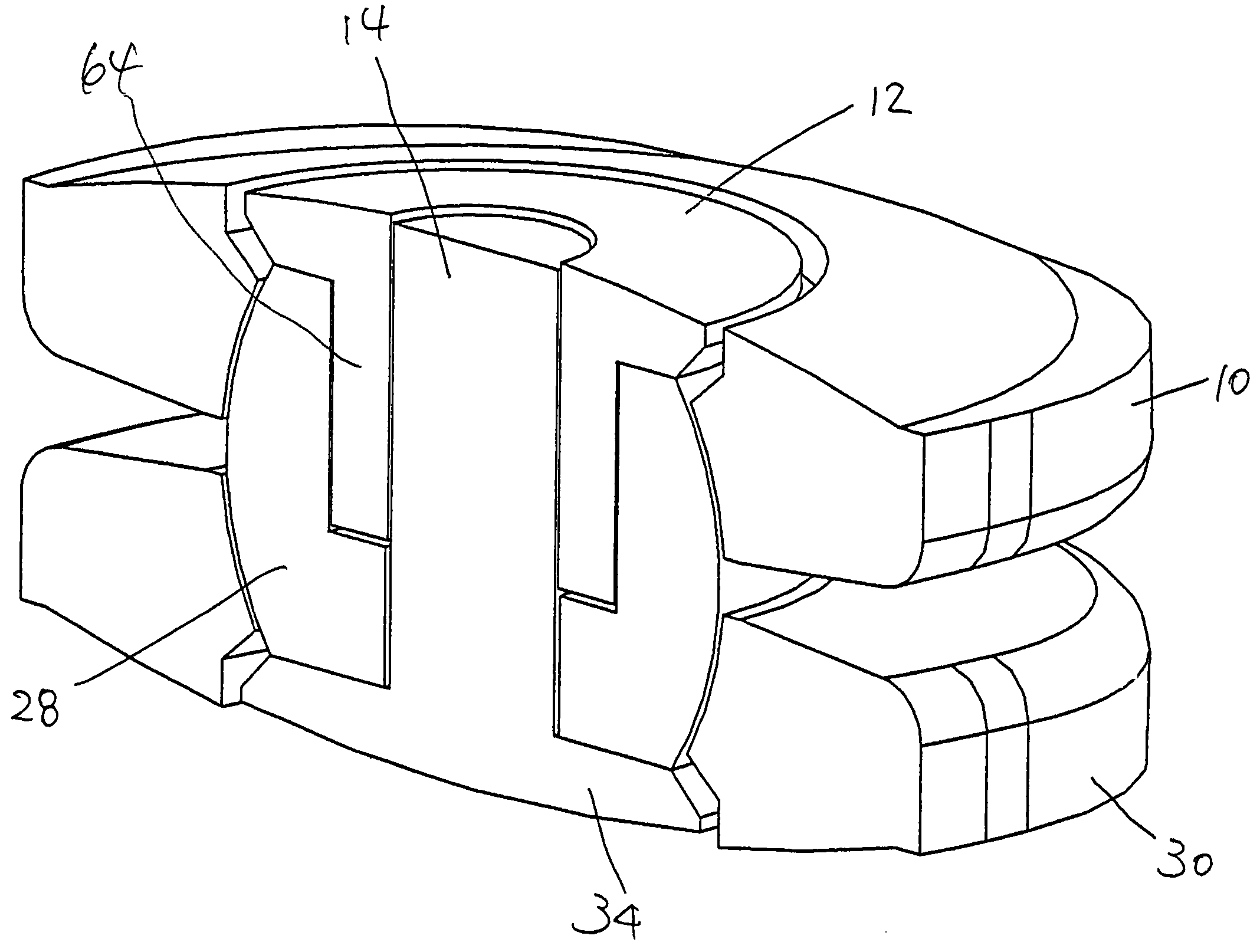Artificial intervertebral disc having a bored semispherical bearing with a compression locking post and retaining caps
a technology of compression locking post and artificial intervertebral disc, which is applied in the field of artificial intervertebral disc having a bored semispherical bearing with a compression locking post and retaining caps, can solve the problems of collateral injury to the patient's spine, limit the overall flexibility of the spinal column, and restrict the normal motion of the patient, so as to facilitate the rotation of the baseplate, prevent the lateral translation of the baseplate relative to one another, and maximize the effect of the basepla
- Summary
- Abstract
- Description
- Claims
- Application Information
AI Technical Summary
Benefits of technology
Problems solved by technology
Method used
Image
Examples
Embodiment Construction
[0032]While the invention will be described more fully hereinafter with reference to the accompanying drawings, in which particular embodiments and methods of implantation are shown, it is to be understood at the outset that persons skilled in the art may modify the invention herein described while achieving the functions and results of the invention. Accordingly, the descriptions that follow are intended to be illustrative and exemplary of specific structures, aspects, and features within the broad scope of the invention and not as limiting of such broad scope.
[0033]Referring first to FIGS. 1g and 1h, the artificial intervertebral disc assembly of the present invention generally comprises first and second endplates 10, 30 rotatably retained on a bearing 28 of a bearing mechanism which comprises bearing 28 and first and second retaining caps 12, 34. When assembled as shown in FIGS. 1g and 1h, retaining cpas 12, 34 are connected to each other by engagement of respective compression l...
PUM
 Login to View More
Login to View More Abstract
Description
Claims
Application Information
 Login to View More
Login to View More - R&D
- Intellectual Property
- Life Sciences
- Materials
- Tech Scout
- Unparalleled Data Quality
- Higher Quality Content
- 60% Fewer Hallucinations
Browse by: Latest US Patents, China's latest patents, Technical Efficacy Thesaurus, Application Domain, Technology Topic, Popular Technical Reports.
© 2025 PatSnap. All rights reserved.Legal|Privacy policy|Modern Slavery Act Transparency Statement|Sitemap|About US| Contact US: help@patsnap.com



